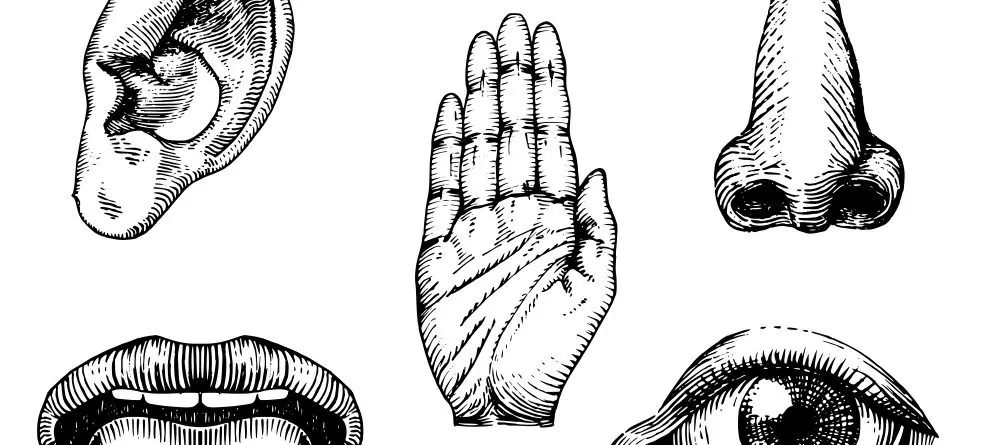How to Create an Unique Brand Identity
- Branding
How to Create an Unique Brand Identity
How do we, as human, form our perception when we experience something entirely new? Say someone put a plate of kangaroo meat on your dining table. For sure, your initial response is to look at it (sight), maybe hear what the waiter has to say about the dish (sound), smell it, touch it to feel the texture of the meat, and eventually, taste it. In other words, we often use all our senses to form our opinion about something we encounter for the first time.
The same applies to creating a holistic brand experience. We can engage more than one of the five senses of the customers to deliver a full sensory and emotional experience. Increasingly, successful brands are incorporating more than just visual and sound in their branding strategies. Sensory branding is now a crucial component when designing brand identities. People use all their senses in their daily experience, and by engaging these senses into their branding experience, you can evoke positive emotional as well as cognitive and behavioural responses.
Exactly how do you engage the five senses?
Sight
This is the most obvious one, and is used by almost all brand experts. Visual tools such as colours, shapes, images, pictures, design, interior decor and lighting (for stores and restaurants) and even attractive models or staff (think Abercrombie & Fitch) are used to engage, stimulate and excite the visual sense.
Sound
The most common sounds used are commercial jingles or the music played in stores or restaurants. Others include your brand ambassador’s voice, slogans, ringtones (remember the nostalgic Nokia ringtone?) or the little tune that plays when you turn on a computer or mobile device (can’t get the Microsoft Window tune out of your head, can you?).
Smell
While this is not often used, it is gaining popularity among premises-based brands such as stores, shopping malls, hotels and even high-end hospitals. With scent diffusion systems that infuse scents directly into heating, ventilation and air-conditioning systems, brands use pleasant aromas to stimulate the olfactory system. Such scent-induced branding often enhances brand recollection and improves the overall brand experience of the customers. Other tried and tested tools include placing fragrance ads (e.g. perfume) in glossy fashion magazines.
Taste
While taste may be applied primarily to the food and beverage industry, non-edible brands are using it to enhance brand experience too. Popular cosmetic brand Lush, for example, has products that resemble delicious goodies, such as chocolate ice cream, to appeal to their customers.
Touch
Allowing your customers to touch and feel your products before buying them is also part of the brand experience. Zalora, one of the most popular online apparel stores in South Asia, has set up brick-and-mortar stores in addition to its online store so that their customers have a place to go to feel the texture of their apparels and try them on before making a purchase.
About Us
Creativeans is an interdisciplinary brand consultant in Singapore, Milan and Jakarta. Our mission is to make the world a more creative place.
This article is an excerpt from the book Are You Brand Dead? by Kimming Yap, Yulia Saksen and Judy Tham. Visit www.areyoubranddead.com for more information.
How do we, as human, form our perception when we experience something entirely new? Say someone put a plate of kangaroo meat on your dining table. For sure, your initial response is to look at it (sight), maybe hear what the waiter has to say about the dish (sound), smell it, touch it to feel the texture of the meat, and eventually, taste it. In other words, we often use all our senses to form our opinion about something we encounter for the first time.
The same applies to creating a holistic brand experience. We can engage more than one of the five senses of the customers to deliver a full sensory and emotional experience. Increasingly, successful brands are incorporating more than just visual and sound in their branding strategies. Sensory branding is now a crucial component when designing brand identities. People use all their senses in their daily experience, and by engaging these senses into their branding experience, you can evoke positive emotional as well as cognitive and behavioural responses.
Exactly how do you engage the five senses?
Sight
This is the most obvious one, and is used by almost all brand experts. Visual tools such as colours, shapes, images, pictures, design, interior decor and lighting (for stores and restaurants) and even attractive models or staff (think Abercrombie & Fitch) are used to engage, stimulate and excite the visual sense.
Sound
The most common sounds used are commercial jingles or the music played in stores or restaurants. Others include your brand ambassador’s voice, slogans, ringtones (remember the nostalgic Nokia ringtone?) or the little tune that plays when you turn on a computer or mobile device (can’t get the Microsoft Window tune out of your head, can you?).
Smell
While this is not often used, it is gaining popularity among premises-based brands such as stores, shopping malls, hotels and even high-end hospitals. With scent diffusion systems that infuse scents directly into heating, ventilation and air-conditioning systems, brands use pleasant aromas to stimulate the olfactory system. Such scent-induced branding often enhances brand recollection and improves the overall brand experience of the customers. Other tried and tested tools include placing fragrance ads (e.g. perfume) in glossy fashion magazines.
Taste
While taste may be applied primarily to the food and beverage industry, non-edible brands are using it to enhance brand experience too. Popular cosmetic brand Lush, for example, has products that resemble delicious goodies, such as chocolate ice cream, to appeal to their customers.
Touch
Allowing your customers to touch and feel your products before buying them is also part of the brand experience. Zalora, one of the most popular online apparel stores in South Asia, has set up brick-and-mortar stores in addition to its online store so that their customers have a place to go to feel the texture of their apparels and try them on before making a purchase.
About Us
Creativeans is an interdisciplinary brand consultant in Singapore, Milan and Jakarta. Our mission is to make the world a more creative place.
This article is an excerpt from the book Are You Brand Dead? by Kimming Yap, Yulia Saksen and Judy Tham. Visit www.areyoubranddead.com for more information.
YOU MIGHT ALSO LIKE

Branding vs Marketing: Key Differences Explained
- Consumer Goods & Services
- Branding
- Business Design
- Education
- UI/UX Design
- Packaging Design
- Communication Design
- Product Design

How to Choose the Best Design Company in Singapore for Your Business
- Graphic Design
- Packaging Design
- Branding
- UI/UX Design
- Packaging Design


















 Singapore
Singapore  Indonesia
Indonesia  Italy
Italy